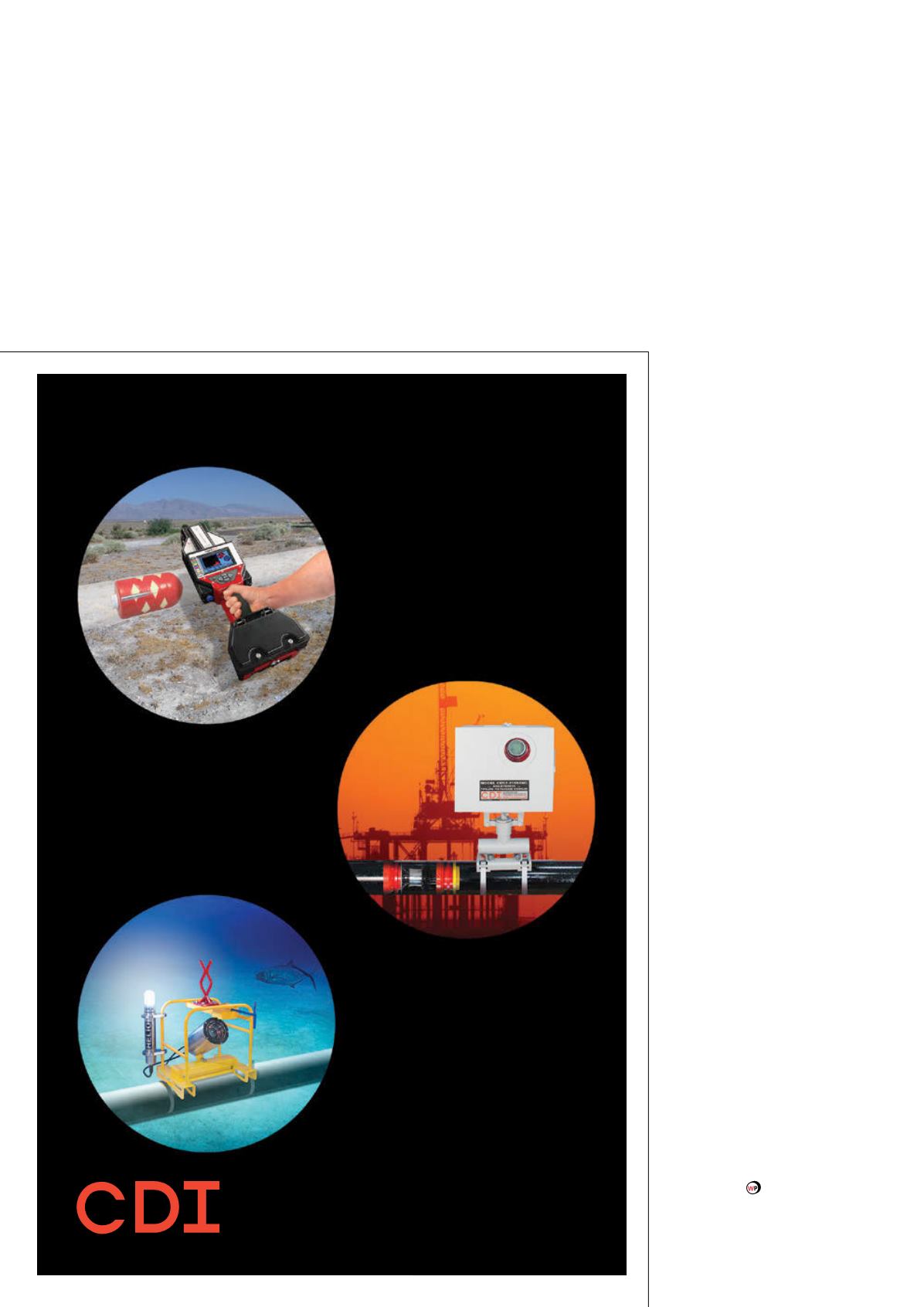
The operations in Malaysia and Norway illustrate how isolation
technology made it possible to complete two very different tasks:
to safely hydro-test a new subsea line and to replace defective
valves. The benefits realised, however, are the same: safety,
efficiency and minimal disruption to flow.
While the pipeline precommissioning and maintenance markets
are the greatest consumers of isolation services, construction
operators have recently begun to recognise its safety advantages
for the construction site.
New application: preventing disaster during
subsea construction works
Although enhancing safety by isolating a section of a line in the
“dropped object zone” is a relatively new application, the benefit
to operators is clear. For example, during construction activity
around a platform, TDW recently isolated a section of a gas export
line over a short distance away from the platform. The SmartPlug
tool was pushed with inhibited seawater and set in the line just
outside the dropped object zone of the construction vessel so that
only a short section needed to be isolated without bleeding down
the entire line.
The benefit of this isolation was that in the event that an
object was dropped from the vessel, and hit and ruptured the
pipeline inside the zone, only inhibited seawater will flush out
of the line, as opposed to a flashback of the entire gas inventory
inside the long export pipeline. If this were to happen, the result
would be disastrous: huge gas bubbles would surge into the
sea, swallowing all floating objects in the area, and explosive
clouds would immediately
form throughout the inhabited
platform area. The isolation
removed the possibility of such
a calamity. For construction
zone isolations such as this,
the isolation period may be a
few weeks or months, creating
a safe work zone throughout
construction.
Shifting market needs
trigger demand for new
applications
Applications for pipeline isolation
technology are wide-ranging
and continue to expand as
needs arise. Because pipelines
will always require maintenance,
and as the number of pipeline
networks increases, the
demand for pressure isolation
will continue to rise. The
number of isolations executed
annually will climb even further
as operators embrace the
remote methodology for other
applications, including tie-ins,
hydro-testing, construction
drop zones and pipelaying. The
safety, cost-savings, efficiency
and environmental benefits
realised by operators as a result
of using the SmartPlug pipeline
pressure isolation method
remain unparalleled, making it a
cornerstone of maintaining and
operating a safe, reliable pipeline
network.
While the responsibility
for pipelines is still critical
and remains unchanged, with
access to reliable tools and an
experienced team, the pipeline
engineer’s daunting burden is
much lighter.
Pipeline Pig Tracking, Signaling, & CommunicaƟons Equipment
DEPLOY
our CD52-A30/A45
non-intrusive pig passage
detecƟon systems
to working depths
of 4,500 meters.
DETECT and RECORD
pipeline pig passages with
our popular UL/CSA or
ATEX approved CD52
Bandit and CD52-316SS
signalers.
LOCATE
staƟonary pigs in launchers
and receivers.
TRACK
anywhere
along a pipeline with our new
mulƟ-frequency X-Series
programmable transmiƩers and
TRAXALL 770 Pig Tracking System.
Onshore
Offshore
Subsea
Track Your Pigs. Anywhere. AnyƟme.


